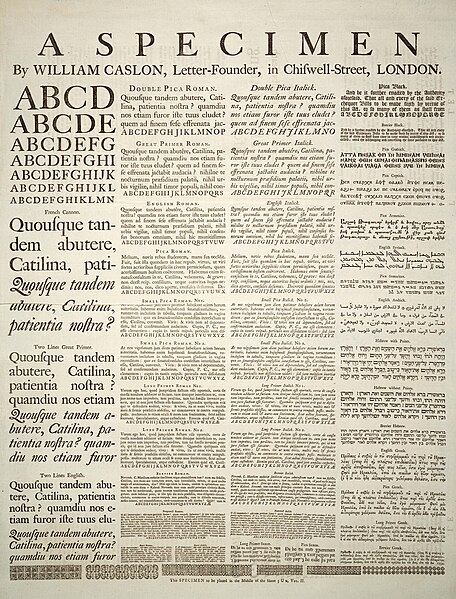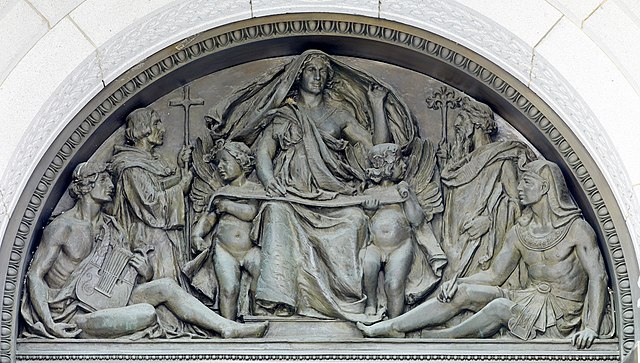A written language is the representation of a language by means of writing. This involves the use of visual symbols, known as graphemes, to represent linguistic units such as phonemes, syllables, morphemes, or words. However, written language is not merely spoken or signed language written down, though it can approximate that. Instead, it is a separate system with its own norms, structures, and stylistic conventions, and it often evolves differently than its corresponding spoken or signed language.
A Specimen of typeset fonts and languages, by William Caslon, letter founder; from the 1728 Cyclopaedia.
A clay tablet with cuneiform writing.
Writing is the act of creating a persistent representation of human language. A writing system uses a set of symbols and rules to encode aspects of spoken language, such as its lexicon and syntax. However, written language may take on characteristics distinct from those of any spoken language.
The Rosetta Stone, with writing using three different scripts, was instrumental in deciphering Egyptian hieroglyphs
Olin Levi Warner, tympanum representing Writing, above exterior of main entrance doors, Thomas Jefferson Building, Washington DC, 1896
Documents that are connected by hyperlinks
Globular envelope with a cluster of accountancy tokens, Uruk period, from Susa – Louvre Museum






